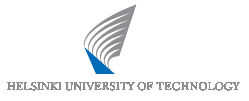About Finland
Quick Reference
| Total area: |
| Seventh largest country in Europe, 338,145 square kilometres; Second most northern country in the world |
| Land frontiers: |
| 586 km with Sweden, 727 km with Norway, 1,269 km with Russia |
| Coastline: |
| 1,100 km |
| Population: |
| 5.2 million |
| Population density: |
| approx. 17 inhabitants per square kilometre |
| Urban population: |
| about 62% |
| Major cities: |
| Helsinki, the capital, pop. 560,000 (the metropolitan area including the neighbouring towns of Espoo, Kauniainen and Vantaa has a population of 965,000); Tampere, pop. 197,000; Turku, pop. 173,000 |
Introduction
A northern country Finland is the northernmost country in the world after Iceland. But the climate is not as freezing as that might suggest, partly because of the warming influence of the Gulf Stream. Summer temperatures encourage sun bathing, and the short but spectacular spring and autumn seasons help tocounterbalance the effect of the winter. And at least inside it is never cold: Finns learned long ago how to build warm houses.
We have Sweden to the west, the tip of Norway in the north, a long
border with Russia to the east, and Estonia to the south, across the Gulf of Finland.
Finland has a long coastline. The archipelago to the south and south west of the country contains around 30,000 islands, and is one of the world's most beautiful marine areas. Finland is also a land of lakes: almost 200,000 at the last count. Two thirds of the country is covered by forest, which finns like to call the .green gold..
Finland is a long, narrow country. In the early summer, when people are sunning themselves on the beaches in the south, others in the north are still skiing. In terms of land area, Finland is the seventh largest country in Europe; with a population of only five million, the sense of space is truly amazing.
Brief history of a modern welfare state
Finland and Finnishness have been moulded by the country.s location between East and West. From the 13th century Finland was part of the Swedish sphere of influence for several centuries, and actually part of the Swedish Realm from the 14th century. Finns fought in many a Swedish army, often against Russia. In 1809, after Sweden had lost the war with Russia, Finland was ceded to Russia and became an autonomous Grand Duchy within Tsarist Russia, its Grand duke being the Tsar himself. During the 19th century Finnish national feeling grew stronger. Finnish language and culture began to flourish, and demands for political independence were increasingly aired. The repressive Russian reaction only served to intensify the nationalist movement.
In 1906 Finland succeeded in establishing a new constitution based on equal and universal suffrage: Finnish women were the first in Europe to be given the vote. After the October Revolution in Russia in 1917, Finland declared itself independent in December of the same year. The first decades of independence were a period of rapid social and cultural construction.
During World War II Finland managed to retain its independence in the Winter War and Continuation War against Russia. Since the war, Finland has pursued a policy of neutrality, military non alliance, and this has created the basis for the present welfare state. Finland has actively contributed to the promotion of world peace, disarmament and international cooperation. We have hosted numerous peace negotiations and conferences over the past few decades. Finland has been a member of the European Union since the beginning of 1995.
Educational standards
Finland has two official languages: Finnish and Swedish; the latter is the mother tongue of about 6% of the population.
In addition to Finnish and Swedish, about two thousand people in Lapland speak the Sami language. Finns are proud of their literacy level, which is virtually 100%.






























